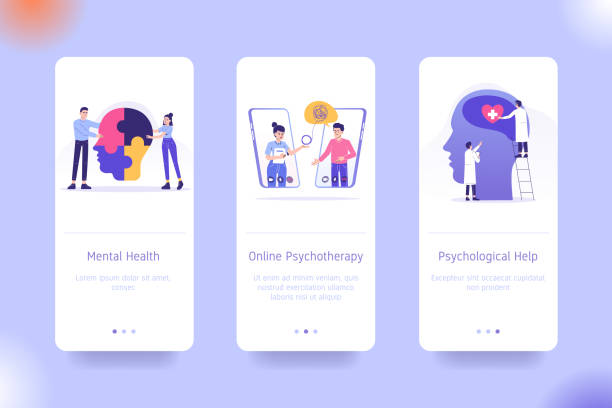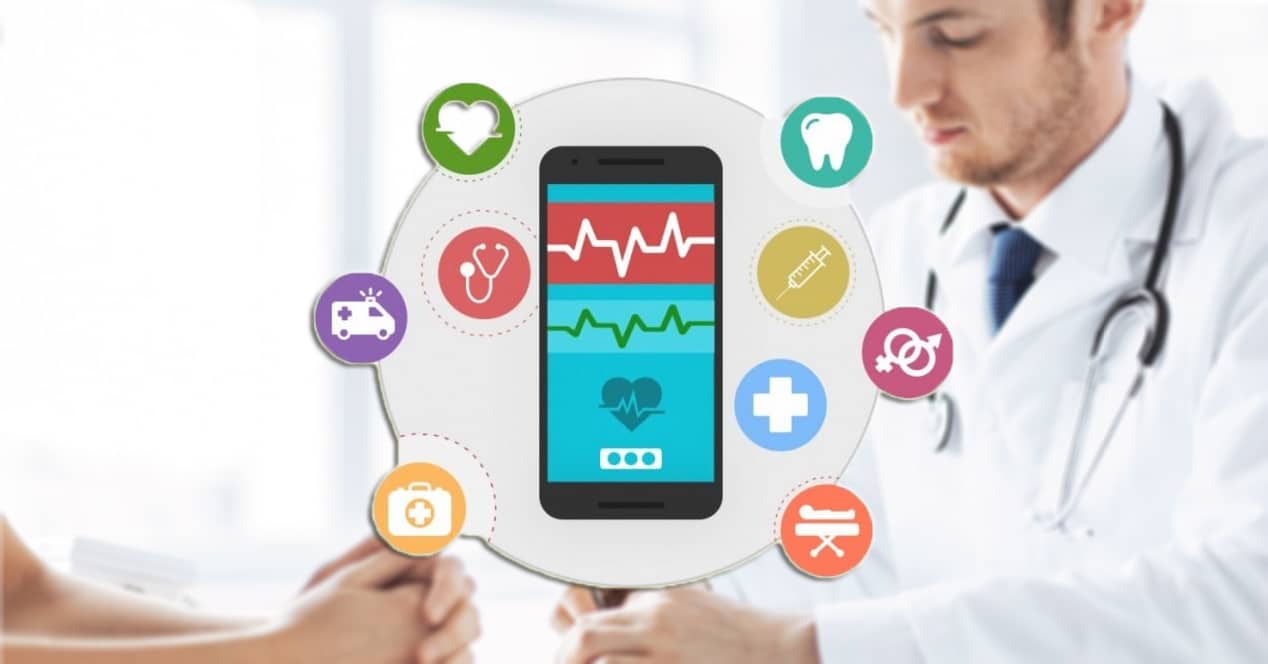The digital revolution has permeated virtually every sector of society, and healthcare is no exception. Healing apps stand out as a particularly transformative force among the many technological advancements reshaping the medical field. These applications, designed for smartphones and other mobile devices, are revolutionizing patient care by providing Innovative Healing Apps health monitoring, treatment, and wellness solutions. This blog explores how healing apps change patient care, highlighting their benefits, challenges, and future potential.
The Rise of Healing Apps
What Are Healing Apps?
Healing apps, also known as health apps or mHealth apps, are mobile applications designed to support health and wellness. They encompass various functionalities, from chronic disease management and mental health support to fitness tracking and telemedicine. These apps leverage the ubiquity of smartphones to offer convenient, personalized healthcare solutions.
Growth and Adoption
The market for healing apps has grown exponentially over the past decade; according to a report by Statista, the global mHealth market is expected to reach $236 billion by 2026, driven by increasing smartphone penetration and growing demand for remote healthcare solutions. The convenience, accessibility, and cost-effectiveness of mobile health technologies fuel this rapid adoption.
Benefits of Healing Apps
Improved Access to Care
One of the most significant benefits of healing apps is their ability to improve access to care. By providing healthcare services through mobile devices, these apps eliminate many barriers to traditional healthcare, such as geographic distance and limited availability of providers.
- Telemedicine and Virtual Consultations: Apps like Teladoc and Amwell enable patients to consult with healthcare providers remotely. This mainly benefits individuals in rural or underserved areas, where access to healthcare facilities may be limited.
- 24/7 Availability: Healing apps offer round-the-clock access to health information and support. Patients can use these apps anytime, making managing health conditions easier and seeking advice without waiting for an appointment.
Enhanced Patient Engagement
Innovative Healing Apps empower patients to take an active role in their healthcare. By providing tools for self-monitoring and education, these apps encourage patients to engage more deeply with their health.
- Self-Monitoring and Tracking: Apps like MyFitnessPal and Glucose Buddy allow patients to track their diet, exercise, and blood glucose levels. This data helps patients understand their health patterns and make informed decisions about their care.
- Educational Resources: Many healing apps include educational content to help patients understand their conditions and treatments. For example, the ADA Diabetes app offers resources on managing diabetes, including diet tips and medication information.
Personalized Care
Healing apps can deliver personalized healthcare experiences by using data analytics and machine learning to tailor recommendations and interventions to individual patients.
- Tailored Treatment Plans: Apps like WellDoc’s BlueStar for diabetes management provide personalized treatment plans based on user data. These plans adjust as the app learns more about the patient’s health behaviours and responses.
- Predictive Analytics: Some apps use predictive analytics to anticipate health issues before they become critical. For instance, the app Cardiogram uses heart rate data from wearable devices to predict the risk of conditions like atrial fibrillation and sleep apnea.
Cost Savings
Healing apps can reduce the need for in-person visits and enable more efficient management of chronic conditions, leading to significant cost savings for patients and healthcare systems.
- Reduced Hospital Admissions: Apps that help manage chronic diseases, such as AsthmaMD, can reduce hospital admissions by assisting patients to control their symptoms and avoid exacerbations.
- Lower Healthcare Costs: Telemedicine apps reduce the need for costly in-person consultations. A study published in Health Affairs found that telehealth visits cost an average of $79, compared to $146 for in-person visits.

Categories of Healing Apps
Chronic Disease Management
Managing chronic diseases like diabetes, hypertension, and asthma can be challenging. Healing apps in this category provide tools to help patients monitor their conditions, adhere to treatment plans, and communicate with their healthcare providers.
Examples:
- Glucose Buddy: Helps diabetes patients track blood sugar levels, medications, and meals.
- MySugr: Another diabetes management app that offers logging features, reports, and integration with glucose meters.
Mental Health and Wellness
Mental health apps provide support for conditions such as anxiety, depression, and PTSD. These apps offer therapeutic exercises, mood tracking, and access to mental health professionals.
Examples:
- Headspace: Offers guided meditation and mindfulness exercises to reduce stress and improve mental well-being.
- Moodpath: Provides mental health assessments and access to cognitive behavioural therapy exercises.
Fitness and Nutrition
Apps focused on fitness and nutrition help users set and achieve health goals, track physical activity, and maintain a balanced diet. These apps are popular among individuals looking to improve their health and wellness.
Examples:
- MyFitnessPal: Allows users to log food intake and exercise and provides nutritional information and goal tracking.
- Strava: A fitness app for tracking running and cycling activities, offering performance analysis and social features.
Telemedicine and Virtual Care
Telemedicine apps enable patients to consult with healthcare providers remotely. These apps are precious for providing care in remote areas and when in-person visits are not feasible.
Examples:
- Teladoc: Offers virtual consultations with doctors for various health issues.
- Doctor on Demand: Provides video visits with board-certified physicians, psychiatrists, and psychologists.
Medication Management
Medication management apps help patients remember to take their medications on time and provide information about their prescriptions. These apps can improve treatment plan adherence and reduce medication error risk.
Examples:
- Medisafe: This program sends reminders to take medications and tracks adherence. It also provides information about potential drug interactions.
- PillPack: A digital pharmacy app that organizes and delivers medications in pre-sorted doses.
Challenges and Considerations
Privacy and Security
One of Innovative Healing Apps‘ primary concerns is the privacy and security of patient data. These apps collect sensitive health information that must be protected against unauthorized access and breaches.
Solutions:
- Encryption: Ensuring that all data transmitted between the app and servers is encrypted.
- Compliance: Adhering to HIPAA (Health Insurance Portability and Accountability Act) regulations in the U.S. and GDPR (General Data Protection Regulation) in Europe.
- User Education: Educating users about best data protection practices, such as using strong passwords and enabling two-factor authentication.
Digital Divide
While healing apps offer many benefits, there is a risk of exacerbating the digital divide. Individuals with access to smartphones or reliable internet may be able to take advantage of these technologies.
Solutions:
- Accessibility Initiatives: Developing programs to provide smartphones and internet access to underserved populations.
- User-Friendly Design: Ensuring that apps are designed to be accessible to users of all ages and technical abilities.
- Multilingual Support: Offering content and support in multiple languages to reach a broader audience.
Clinical Validation
Rigorous clinical validation is essential to ensure the efficacy and safety of healing apps. This involves testing the app in real-world settings and verifying that it delivers the intended health benefits.
Solutions:
- Clinical Trials: Conducting clinical trials to evaluate the app’s effectiveness and safety.
- Peer-Reviewed Studies: Publishing findings in peer-reviewed journals to establish credibility.
- Continuous Monitoring: Implementing continuous monitoring and improvement mechanisms based on user feedback and new research.
Future of Healing Apps
Integration with Wearables
Integrating healing apps with wearable devices like fitness trackers and smartwatches is a growing trend. This combination allows for continuous health monitoring and more comprehensive data collection.
Examples:
- Apple Health: This app integrates with the Apple Watch to track health metrics such as heart rate, activity levels, and sleep patterns.
- Fitbit: Works with the Fitbit app to monitor physical activity, sleep, and overall health.
Artificial Intelligence and Machine Learning
Artificial intelligence (AI) and machine learning (ML) are poised to enhance the capabilities of healing apps further. These technologies can analyze vast amounts of data to provide personalized insights and predictive analytics.
Examples:
- AI Chatbots: Apps like Woebot use AI chatbots to provide mental health support and cognitive behavioural therapy.
- Predictive Health Analytics: Apps like Cardiogram use AI to predict health issues based on wearable device data.
Virtual and Augmented Reality
Virtual reality (VR) and augmented reality (AR) technologies offer exciting possibilities for healing apps. These immersive technologies can be used for pain management, physical therapy, and mental health treatments.
Examples:
- VR Pain Management: Apps like AppliedVR use VR to help patients manage chronic pain through immersive experiences.
- AR Physical Therapy: Apps like Physera use AR to guide patients through physical therapy exercises with real-time feedback.
Healing apps are transforming patient care by improving access to healthcare, enhancing patient engagement, providing personalized care, and reducing costs. These apps encompass various functionalities, from chronic disease management and mental health support to fitness tracking and telemedicine. While challenges such as privacy concerns and the digital divide remain, the benefits of healing apps are undeniable.
The future of healing apps looks promising, with advancements in AI, wearables, and immersive technologies poised to revolutionize patient care further. As these technologies continue to evolve, they will play an increasingly vital role in shaping the future of healthcare, making it more accessible, efficient, and patient-centred.
For coaches, healthcare providers, and patients alike, staying informed about the latest developments in healing apps is essential. By embracing these Innovative Healing Apps tools, we can unlock new possibilities for improving health outcomes and improving care quality.


